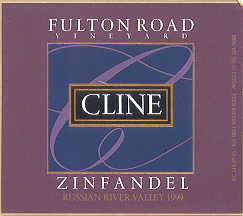How to Read a Wine Label
The basic knowledge required to properly identify all the parts of a wine label is really quite minimal.
New World Labels
The "New World" in wines is anything outside Europe and the Middle East, where wine as we know it originated and developed.
Having far less tradition (or historical baggage) to hold them back, most New World countries have simpler, easier to understand wine labels than their European counterparts. Most labels will include some or all of the following:
- Winemaker, the establishment that made that particular wine. This would be a name like "Robert Mondavi" or "Cline Cellars."
- A Proprietary name is often added by a winemaker for marketing reasons. If you see strange, seemingly meaningless words that sound more like car names (who the heck comes up with things like "Acura," "Integra," and so on?), it's the winemaker trying to be fancy. Sometimes that's not good enough, so the winemaker tosses in some gratuitous foreign phrases like "Reserve Cuvee." Sometimes it has to be extra special, as in "Special Reserve." These terms are all meaningless as they are unregulated terms; a winemaker can label his entire production run "Special Reserve", which wouldn't make it very special or reserved, would it?
- Varietal, such as Merlot or Chardonnay. In most New World countries, wine that falls under whatever wine regulating organization that exists there must be made from at least 75% (or 85%) of the named grape varietal. The remainder may be made up of other grapes, chocolate syrup, antifreeze, or anything else. Blending is not necessarily a bad thing, as a good winemaker can use it to enhance certain traits and balance a wine. Many of Australia's best are blends.
- Vintage, the year the grapes were harvested. If it is a regulated wine, virtually all the grapes must come from that year.
- Geographic Origin, the place the grapes came from. For regulated wines, this means that most (75%) or all of the grapes come from the named region, like "Napa Valley" or "Alexander County." Unregulated el-cheapo jug wines don't care much for following the rules anyway (especially in California), so that California "Chablis" certainly does not come from the Chablis region of France, nor is it likely to even be made from the Chardonnay grape that the Real Thing is made from. The named geographic origin is meaningful on labels from reputable winemakers.

This label is representative of the kind you'll see in fine wine
shops. This one is a Zinfandel from Cline Cellars, vintage 1999. The
winemaker calls this particular line "Fulton Road Vineyard" and
tells us that the grapes come from the Russian River Valley, which we
know to be in Sonoma County.
Old World (European) wine labels
With few exceptions, wines in Europe are named by geographic origin, not varietal. You are expected to have some passing familiarity with the various wine regions, so if you see a red wine from Beaujolais, you'd know it is made from the Gamay grape because that's what they grow in Beaujolais. The Europeans have had centuries to experiment and refine their wines, and largely know what are the best grapes to grow in a given geographic region.
Most European wine countries have stricter labelling and growing laws than the United States. A wine that complies with the regulations carries a mark that identifies it as such; it goes by various names - AOC in France, QmP in Germany, and DOCG in Italy. These regulations are typically very comprehensive - they specify permitted grape varieties, maximum yields, residual sugar levels, and sundry other details.
The guiding principle is that the region should tell you what type of wine to expect. If you know the region, you know the grape varietal and the style of wine to expect.
See the pages on specific countries and regions for information on their respective labels.